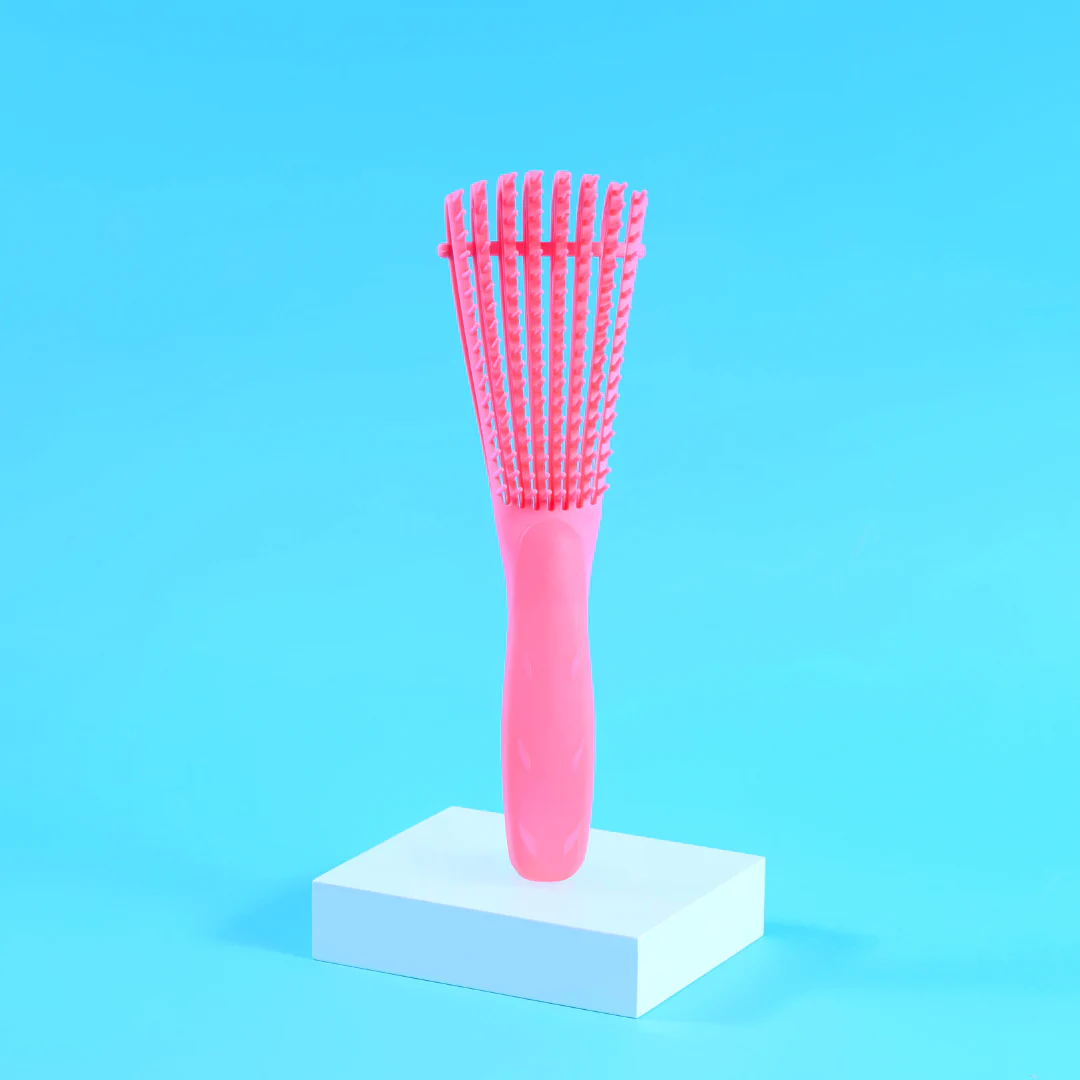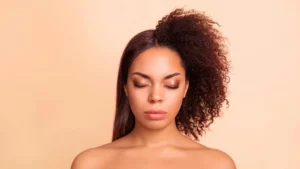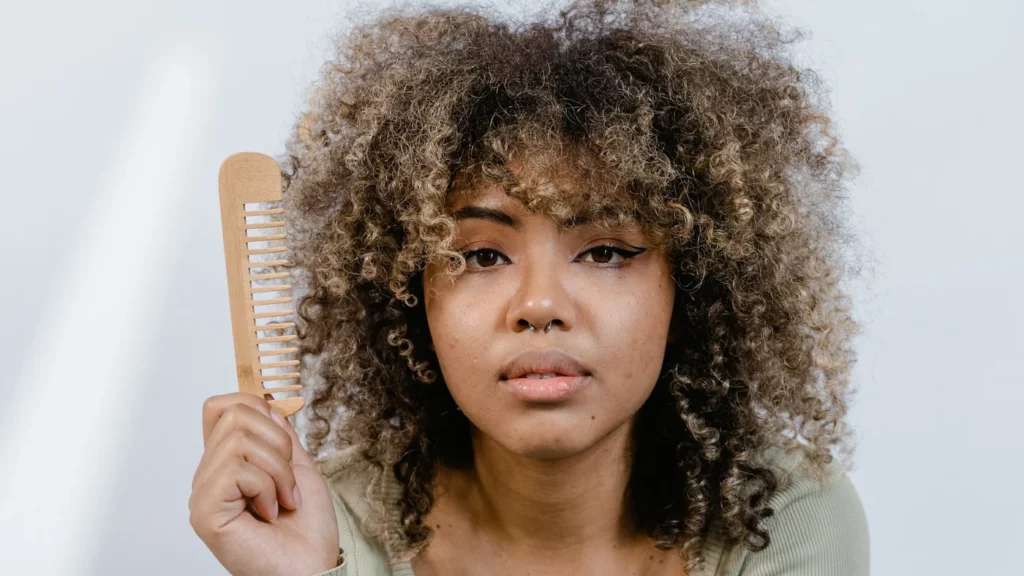Transitioning to natural hair from relaxed can feel like an endless waiting game. You’ve gone to great lengths to grow out your chemically treated strands in the hopes of one day sporting a perfect Afro – so why not just cut it all off and be done with it? It seems like an easy decision, but natural hair is a commitment that requires some serious preparation.
New routines, different products, and modified styling techniques aren’t exactly simple changes you can make overnight. If you’re planning on transitioning from relaxed to natural hair, read on for our handy guide full of useful tips and tricks. Read on for everything you need to know about transitioning from relaxed to natural hair…
What is Transitioning?
A transition phase is the length of time it takes for your natural hair to grow out the remaining relaxed strands. The amount of time it takes for this transition phase to end will depend on many factors – such as your hair growth rate, styling frequency, diet and general health. You can transition from relaxed to natural hair by cutting your chemically treated strands progressively shorter until the point where you’re able to fully embrace your natural curls.
Although transitioning doesn’t have a strict rule book, there are certain steps you can follow to make the transition process as painless as possible. Transitioning is a great way to experience the benefits of both types of hair – so you get the best of both worlds. It’s an excellent way to discover which hair type you prefer and if you’re ready to make a full-time commitment to natural hair.
Guide for Transitioning to Natural Hair
We’ve come up with a guide to help you transition from relaxed to natural hair.
- First, book yourself in for a consultation at a salon. You’ll be able to discuss your plans and find out about the best way to transition your hair. Make sure you discuss your current hair length and how long you’d like to transition for.
- Next, you need to decide which hairstyle you’d like to rock. If you’re not sure, try a few different looks to help you decide.
- Then, start cutting. If you have long relaxed hair, you’ll want to start cutting your strands gradually. It’s important to keep your hair moisturized during the transitioning process. Use a hydrating shampoo and conditioner to keep your hair soft and hydrated. If necessary, you can also add a leave-in conditioner for a few weeks.
- Try to avoid any harsh chemicals or products that could potentially damage your hair. This includes coloring or straightening your hair – which isn’t recommended for transitioning hair.
- Try to avoid heat styling as much as possible until your natural hair has fully grown out. You can use a cold cream to lock in moisture and keep your hair healthy.
- Lastly, don’t stress about the length of time it’ll take for your hair to grow out. Once you’ve fully transitioned to natural hair, you can cut your relaxed strands off completely.
Shampoos for Transitioning to Natural Hair
Choosing the right shampoo during the transition period can make a huge difference to your hair’s health. Many shampoos are too harsh on relaxed strands, while others are just too heavy on the natural hair. Throughout the transition period, your hair might feel completely different to how it did before. So, it’s important to find a shampoo that’s suitable for both types of hair. A sulfate-free shampoo is a great option for transitioning hair.
These types of shampoos are particularly gentle on relaxed strands, but aren’t too harsh on natural hair. They also contain ingredients that help to repair and protect the hair. If your hair feels really dry, itchy or brittle, you may want to try an anti-dandruff shampoo such as Head & Shoulders. These anti-dandruff shampoos contain ingredients that help to soothe itchy scalps.
Conditioners for Transitioning to Natural Hair
Choosing the right conditioner during the transition period can make a huge difference to your hair’s health. Many conditioners are too heavy on relaxed strands, while others are just too light on natural hair. Transitioning hair is fragile and likely to snap easily – so it’s important to find a conditioner that’s suitable for both types of hair. A lightweight conditioner is a great option for transitioning hair.
These types of conditioners are particularly light on relaxed strands, but aren’t too light on natural hair. They also contain ingredients that help to repair and protect the hair. If your hair feels really dry, itchy or brittle, you may want to try a detangling conditioner such as Pantene Pro-V. These detangling conditioners are ideal if your transitioning hair is prone to knots.

Styling Tools for Natural Hair
Whether you’re rocking relaxed strands or natural curls, it’s important to find the right styling tools for your hair type. For example, you wouldn’t use a heated curling iron on relaxed strands – this could cause serious damage. Instead, try using a wide-barrel curling iron to create a bouncy curl.
You can also try using a curling wand to create a loose curl. If you’re rocking natural curls, you can use a wide-barrel curling iron or a curling wand. A wide-barrel iron is great for creating loose curls, while a curling wand is great for creating loose waves. It’s also important to keep styling tools clean to prevent hair damage. Try to wash your styling tools once a week to remove any dirt and build-up.
Natural hair products for Transitioning to Natural Hair
If you’re planning on transitioning from relaxed to natural hair, it’s important to choose the right products. Transitioning hair is fragile and susceptible to breakage – so you want to use products that are gentle and hydrating.
Transitioning hair requires a slightly different routine to natural hair. You don’t need to wash your hair every day – so try to limit washing to every other day. If your scalp is oily, try to wash your hair every other day. It’s also important to seal in the moisture with a leave-in conditioner or a hair mask. You should also try to avoid heat styling as much as possible.

Conclusion
Transitioning from relaxed to natural hair isn’t easy, but it’s definitely worth it. Hair can take up to 2 years to fully grow out – so you’ll have to be patient. It’s important to follow a nourishing hair care routine and use gentle products. It’s also important to treat your hair gently during the transition period. Try to avoid harsh shampoos and conditioners, and make sure you use gentle styling tools. Once your relaxed strands have fully grown out, it’s time to fully commit to natural hair. You can cut your relaxed strands off and embrace your natural curls – it’s time to be you.
Get Your Top Quality Curly Hair Care Tools From Curltastic!
Curltastic is committed to providing our customers with top quality curly hair care tools to make their curly hair look and feel amazing. Get 10% Off your first order + Free Shipping when you Shop Now






